Key takeaways
- A photography portfolio should tell a cohesive visual story, showcasing the artist’s style and vision rather than just a collection of individual images.
- Consistency and thoughtful presentation are crucial; a well-organized portfolio engages viewers and reflects the artist’s true voice.
- Selecting and editing images carefully enhances the portfolio’s emotional impact while maintaining authenticity without over-processing.
- Effective promotion through targeted outreach and consistent online presence can create meaningful connections and opportunities within the photography community.
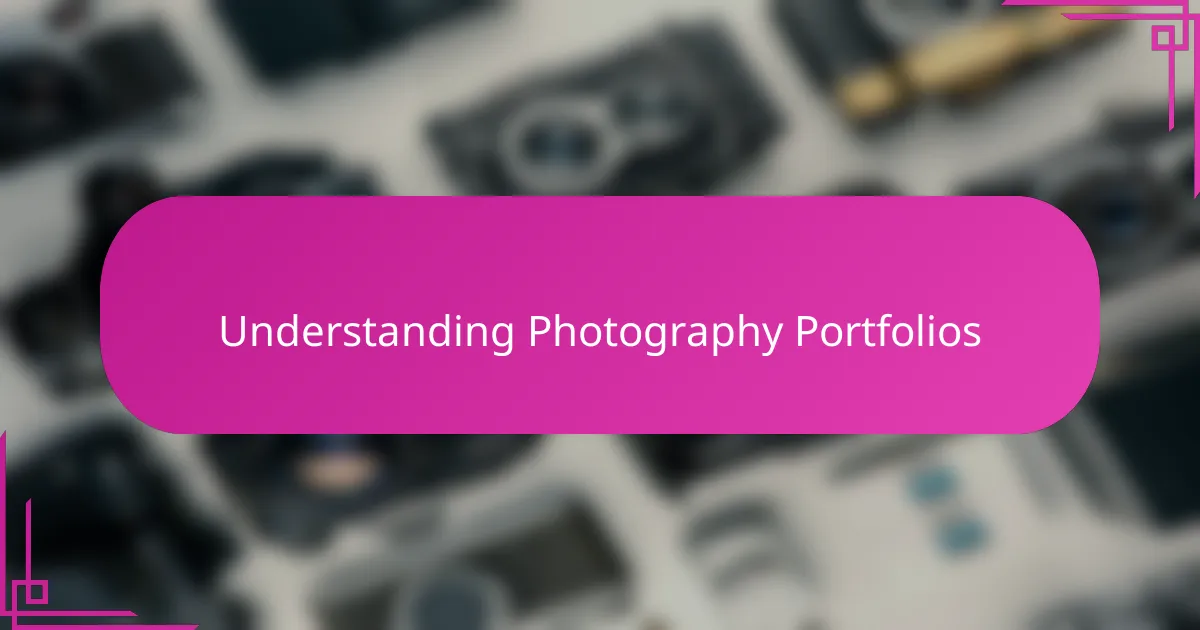
Understanding Photography Portfolios
When I first heard the term “photography portfolio,” I imagined a simple collection of my best photos. But I quickly realized it’s much more than that—it’s a visual story of who I am as an artist. Don’t you think a portfolio should speak for you even when you’re not in the room?
A portfolio represents your style, your voice, and your vision. It’s a living document that evolves with your growth. I’ve found that choosing images is almost like curating an exhibition—you want to create a cohesive experience that draws viewers in and keeps them hooked.
What’s interesting is how a well-organized portfolio can open doors you didn’t expect. I remember the first time a client reached out after browsing my work—it wasn’t just about the photos themselves, but how they were presented. Understanding this changed how I approach building mine entirely.
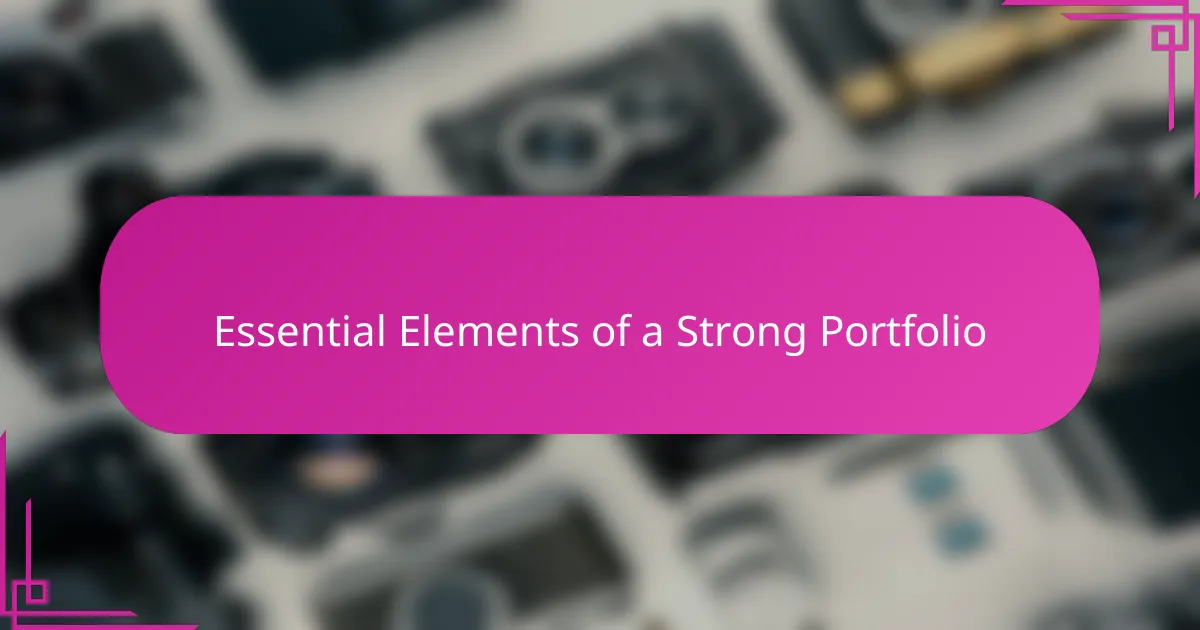
Essential Elements of a Strong Portfolio
A strong portfolio isn’t just about showcasing your best shots; it’s about selecting images that tell a story together. Have you ever noticed how a random jumble of great photos doesn’t quite have the same impact as a thoughtfully arranged series? I learned this the hard way, realizing that each picture should connect to the next, creating a rhythm that keeps viewers intrigued.
Another element I can’t stress enough is consistency. When I first started, I tried to include every style I ever experimented with, thinking it showed versatility. But looking back, that only confused people about who I really was as a photographer. Narrowing down my focus helped me clarify my voice and made my portfolio far more compelling.
Lastly, presentation plays a big role. I made sure my portfolio was easy to navigate and visually clean because, honestly, clutter distracts from the images themselves. Have you ever found yourself closing a website quickly because it felt overwhelming? That’s exactly the feeling you want to avoid with your portfolio—make it inviting, focused, and professional every time.
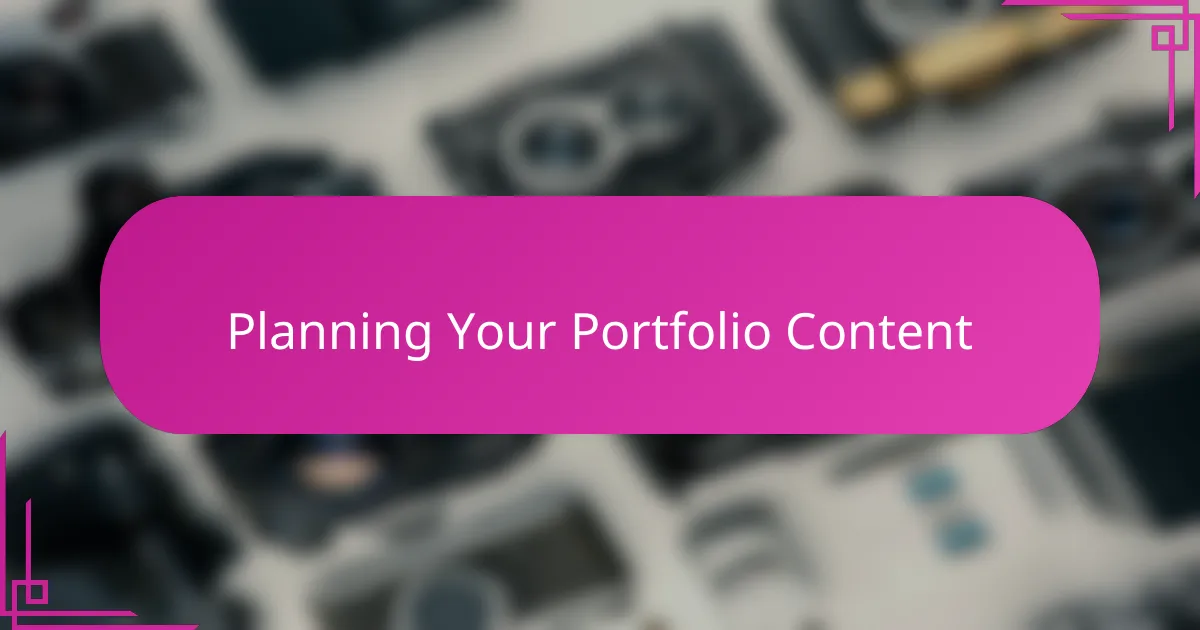
Planning Your Portfolio Content
Planning your portfolio content always felt like piecing together a puzzle to me. I asked myself: what story do I want my photos to tell? It wasn’t easy deciding which images belonged and which didn’t, but focusing on a clear theme made everything click.
I remember grappling with how many photos to include. Too many felt overwhelming, but too few seemed incomplete. Eventually, I found a balance by choosing images that not only showcased my skills but also revealed different facets of my style—a delicate dance, really.
Have you ever thought about the flow between images? In my experience, sequencing photos in a way that guides the viewer’s eye transformed my portfolio from a random gallery into a compelling narrative. It made people linger longer and connect deeper with my work.
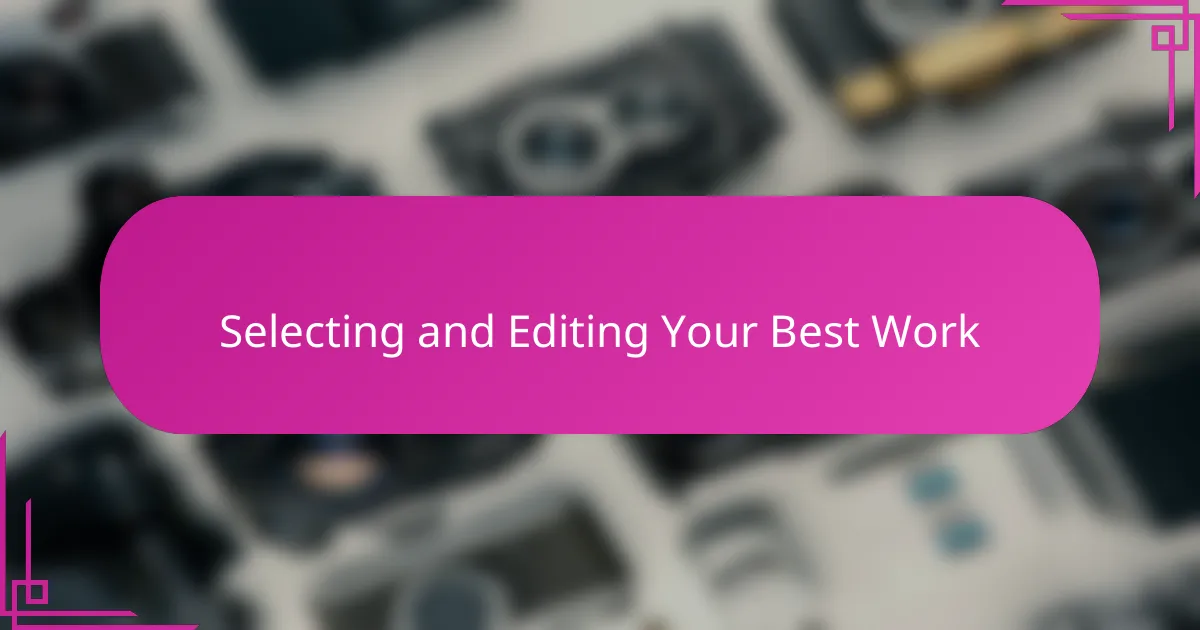
Selecting and Editing Your Best Work
Choosing the right photos felt like one of the toughest parts for me. How do you decide which images truly represent your best work without drowning your portfolio in too many? I learned to trust my gut, picking shots that sparked emotion or told a unique story, even if they weren’t technically perfect.
Editing came next, and honestly, it was just as important as selection. I found that subtle tweaks—adjusting light, cropping thoughtfully, or enhancing colors—could elevate an image from good to memorable. But I resisted the urge to over-edit because authenticity matters; you want your portfolio to reflect your true style, not a filtered version crafted by over-processing.
Have you ever sat back and asked yourself if each photo holds up alongside the others? I like to imagine my portfolio as a conversation, so every image should contribute something meaningful without repeating the same idea. That mindset helped me weed out any “filler” photos and keep only those that truly speak for my vision.
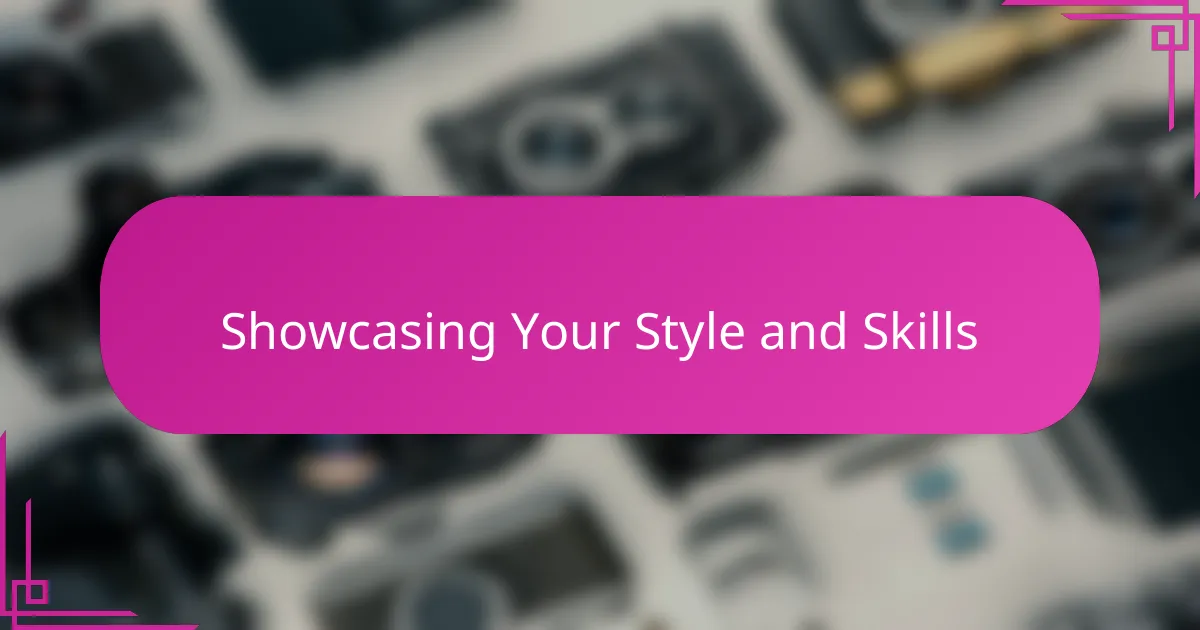
Showcasing Your Style and Skills
Showcasing your style and skills felt like unveiling a part of myself each time I added a new image to my portfolio. I wanted anyone who looked at it to instantly sense my unique perspective, so I carefully picked photos that reflected the way I see the world through my lens. Have you ever noticed how certain images just scream your voice without you needing to explain? That’s the power of truly showcasing your style.
Skill demonstration was tricky because I didn’t want to just flaunt technical prowess—I wanted my work to feel authentic and connected. I selected shots that balanced creativity with technique, like mastering light in a moody portrait or capturing fleeting motion in a street scene. Looking back, those images became shorthand for what I’m capable of, without having to say a word.
At times, I wondered if my style was too niche or if my skills were obvious enough. But sharing my process with others helped me realize that clarity comes from confidence. When you feel sure about your style, it shines through naturally, inviting viewers to experience your craft rather than just observe it. Isn’t that what every photographer wants—to be seen and understood through their work?
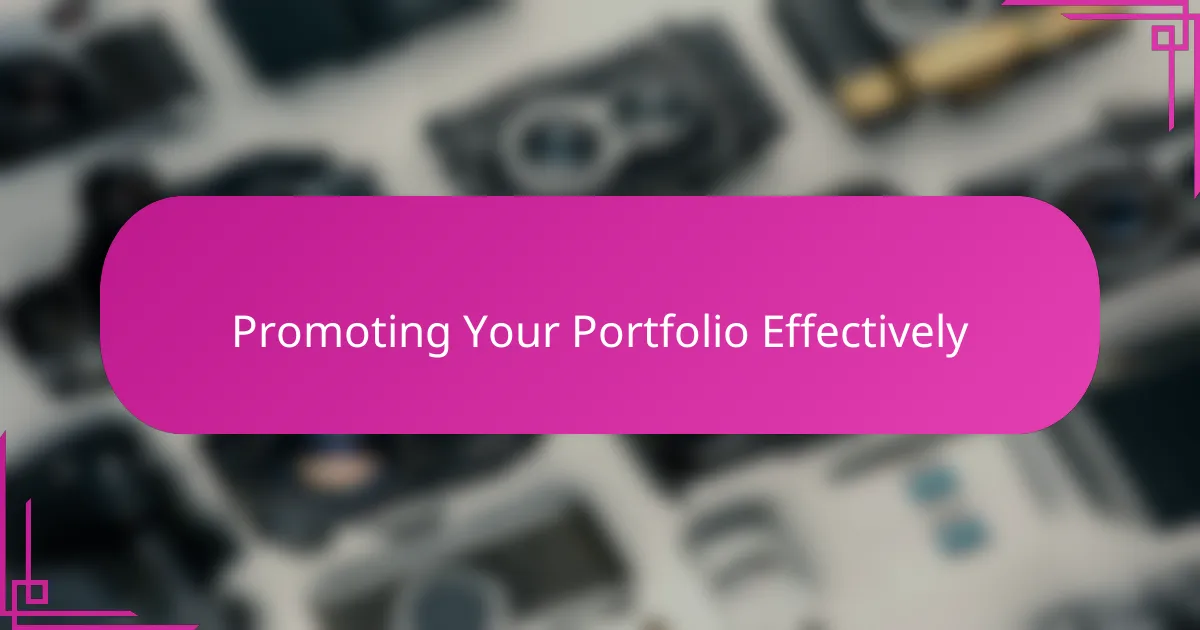
Promoting Your Portfolio Effectively
Promoting your portfolio effectively felt just as important as building it for me. I quickly learned that sharing my work on relevant social platforms wasn’t enough; tailoring my posts to the right audience made all the difference. Have you ever wondered why some photographers’ portfolios get noticed more? It’s often because they understand where their ideal clients spend time online and engage with those communities genuinely.
I also found that reaching out personally—whether through emails or messages—opened doors that passive posting never did. It’s a bit intimidating at first, but when I sent a thoughtful note explaining why I admired someone’s work and shared my portfolio link, it often led to conversations and opportunities. Isn’t that a reminder that behind every click is a real person craving connection?
Finally, consistency in promotion was key. I set small goals, like sharing a new image or update weekly, which kept my portfolio active and visible without feeling overwhelming. Looking back, those steady efforts built momentum slowly but surely, turning my portfolio from a static gallery into a living, breathing invitation for collaboration.
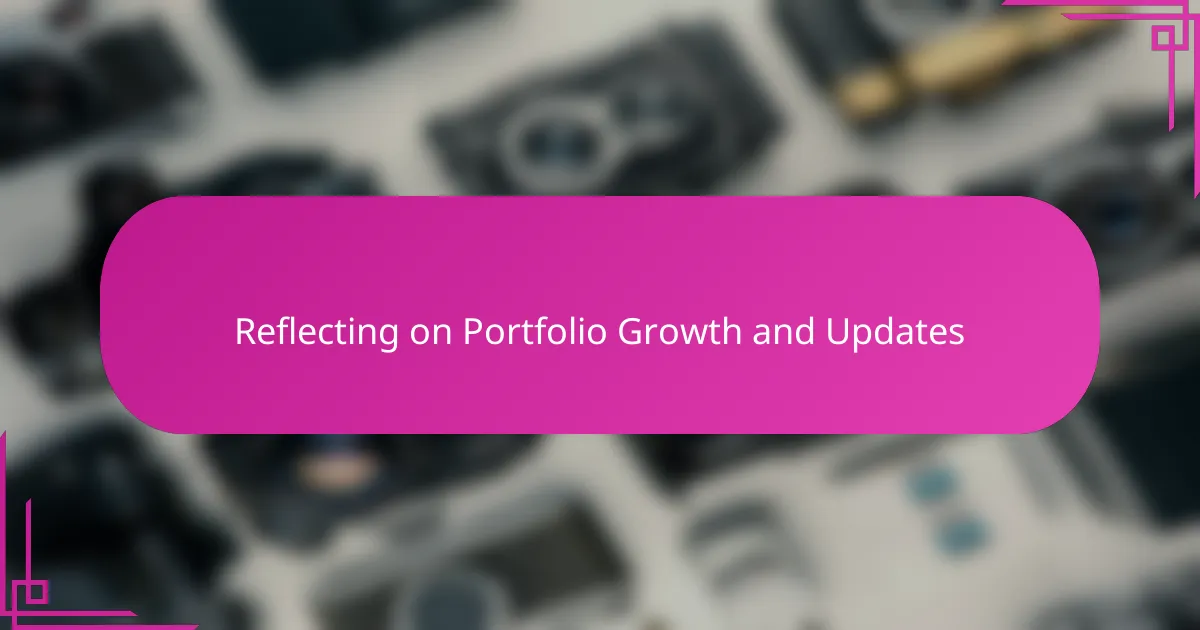
Reflecting on Portfolio Growth and Updates
Reflecting on my portfolio’s growth always feels a bit like flipping through an old photo album—each update marks a moment in my creative journey. Have you ever noticed how some images that once felt groundbreaking now seem a little clumsy? Revisiting my work helped me recognize those shifts and inspired me to freshen things up, keeping my portfolio alive and relevant.
Updating my portfolio isn’t just about swapping photos; it’s about honoring where I’ve been while embracing where I want to go. Sometimes, I catch myself hesitating to remove older favorites because of the memories attached, but I’ve learned that making space for new work is essential. What’s your experience with letting go of past pieces to make room for growth?
I also found that regular reflection made me more intentional with each new addition. Instead of rushing to show every recent shoot, I ask myself if a photo truly represents who I am today or if it adds a unique voice to the story I’m telling. This mindset transformed my portfolio into a thoughtful narrative, rather than just a collection, and that feels incredibly rewarding.